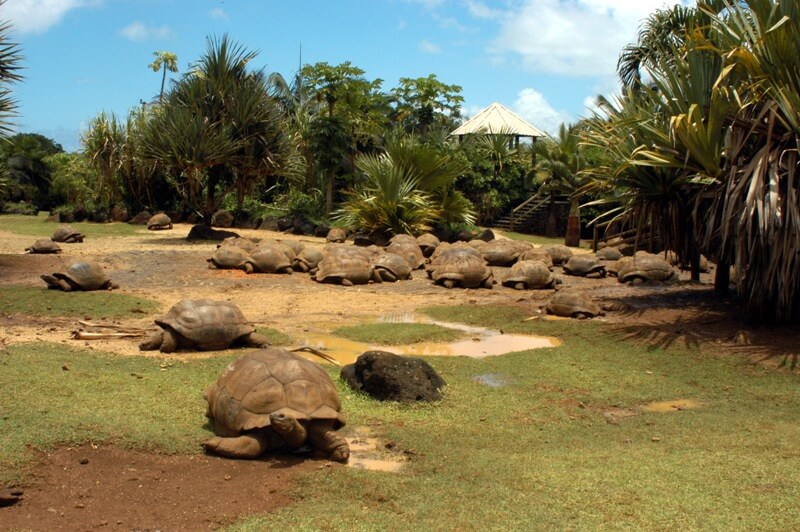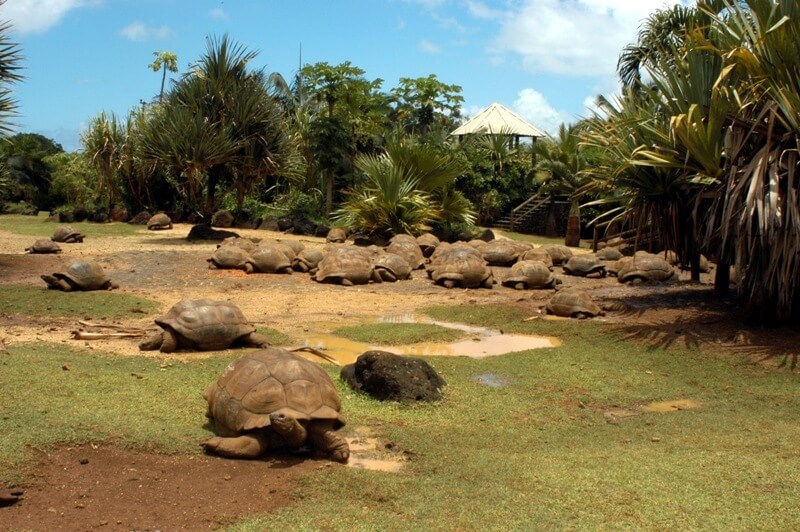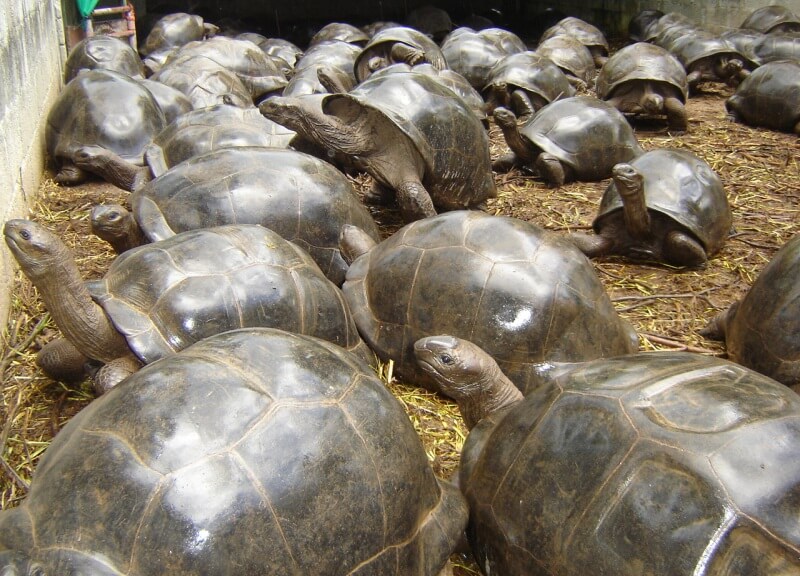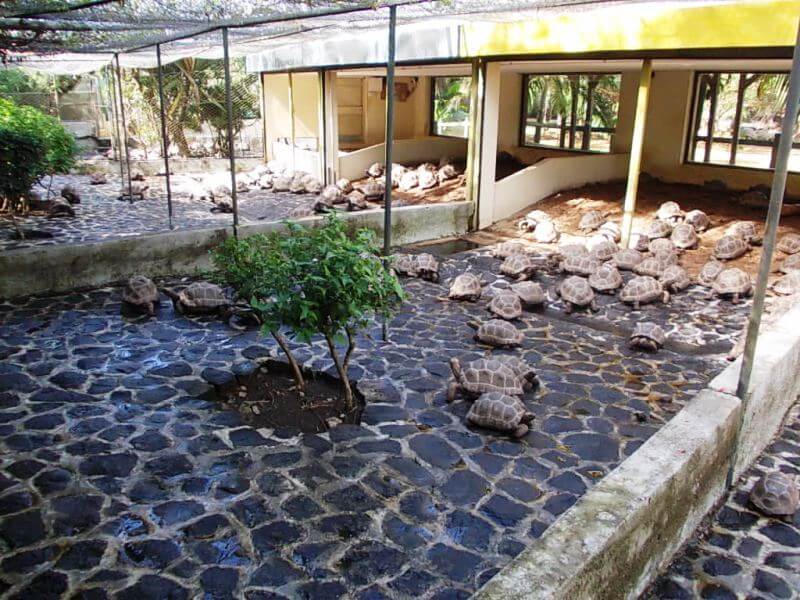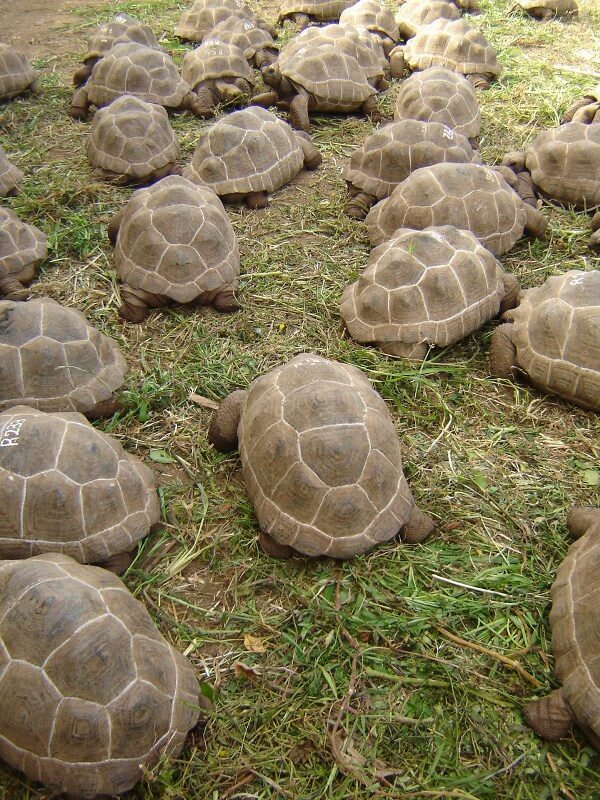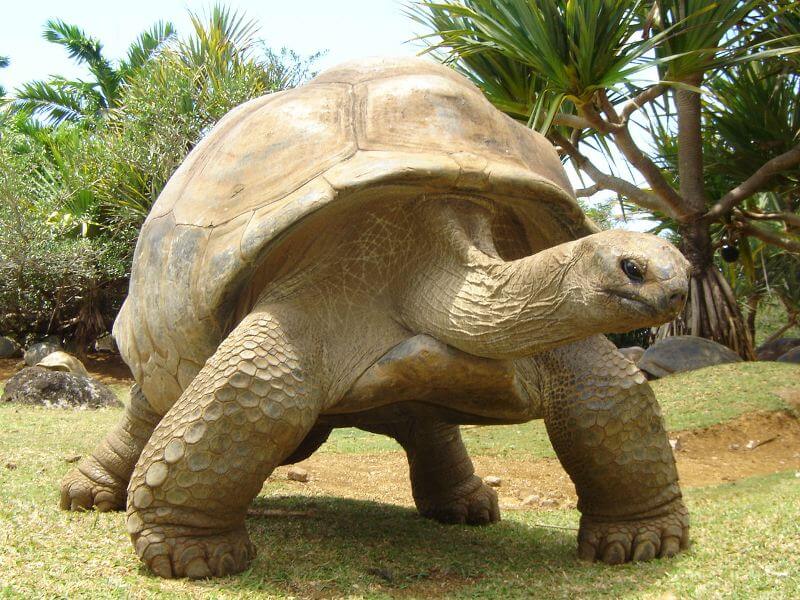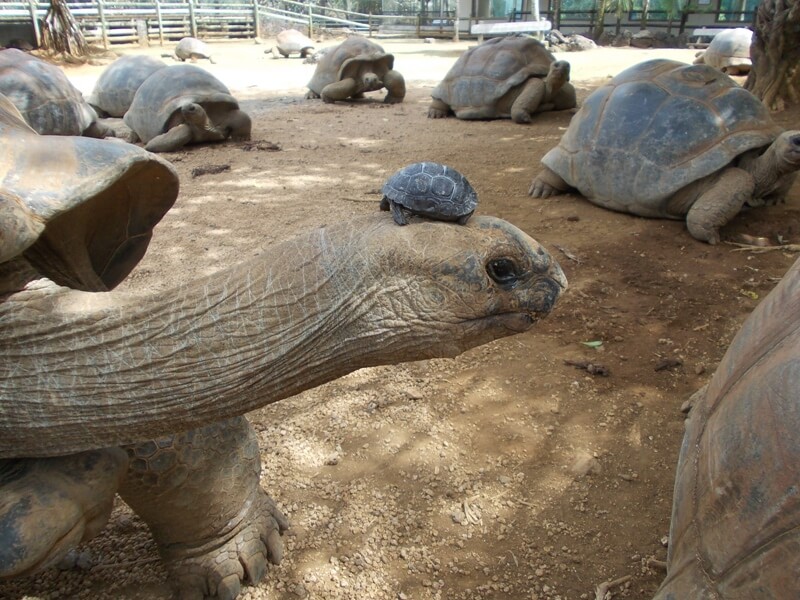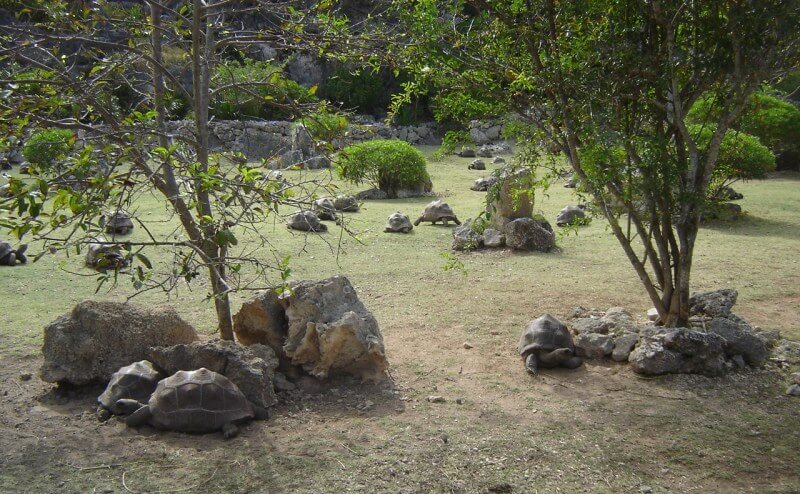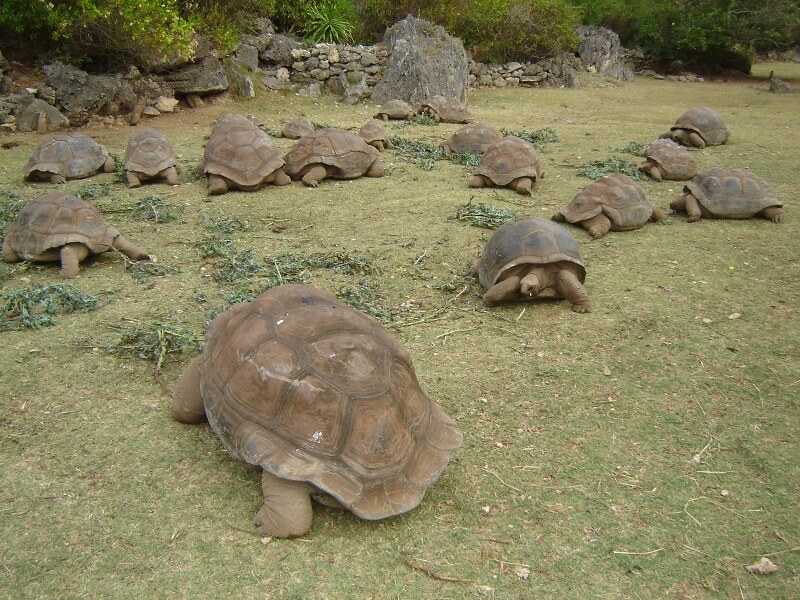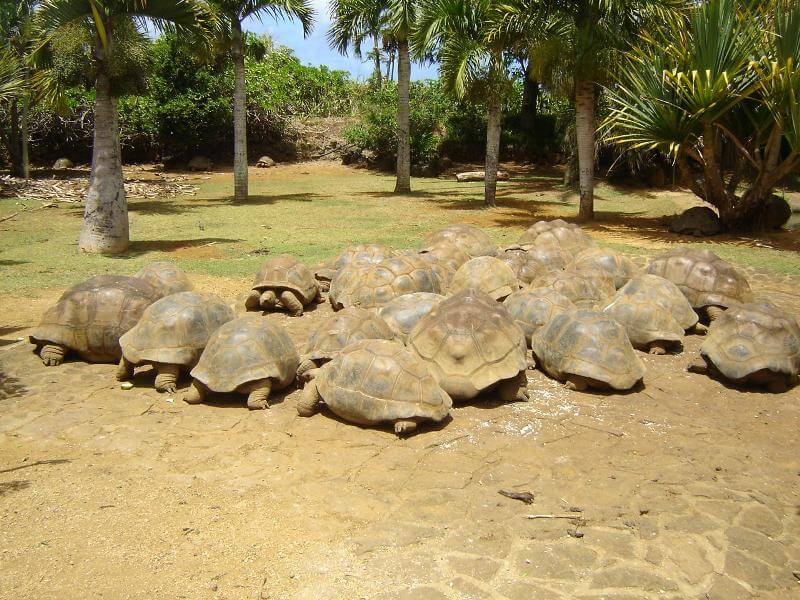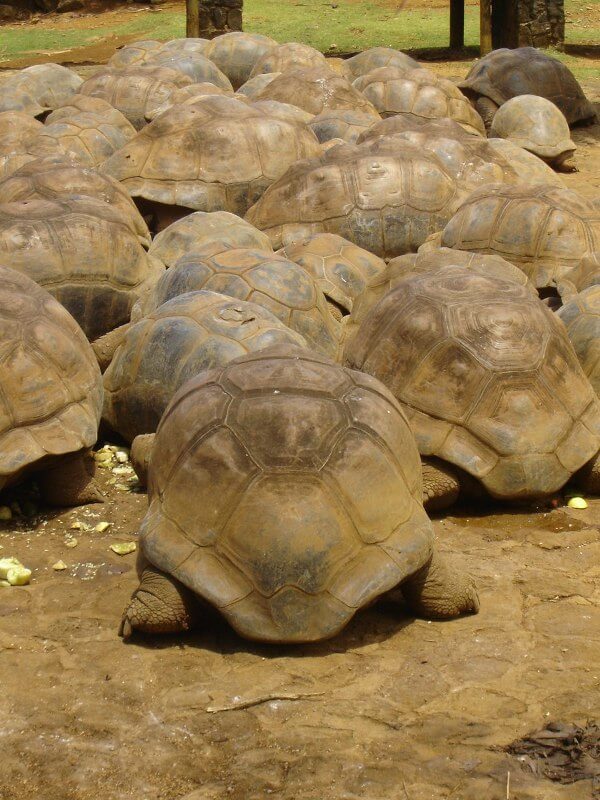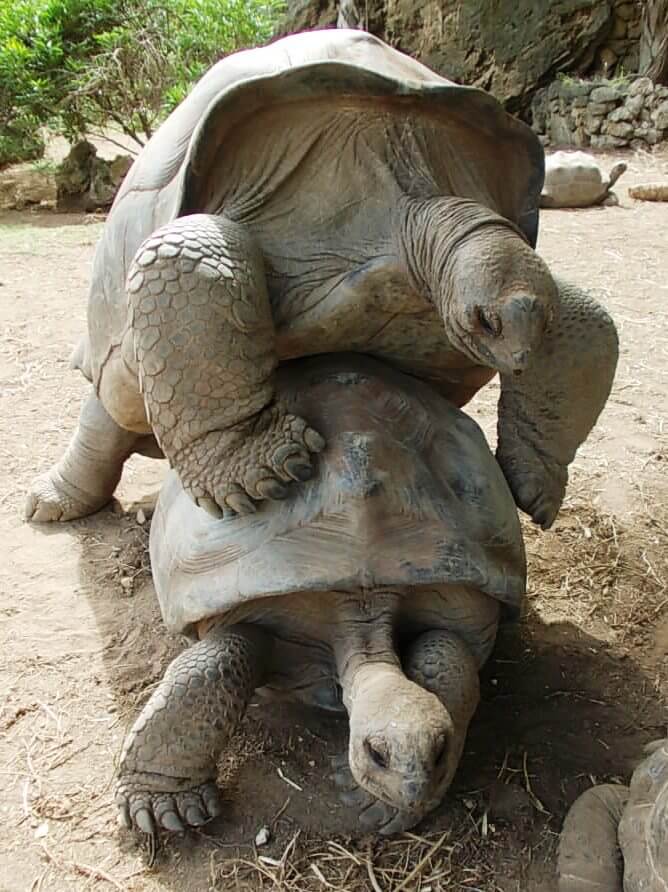Aldabra Special Order
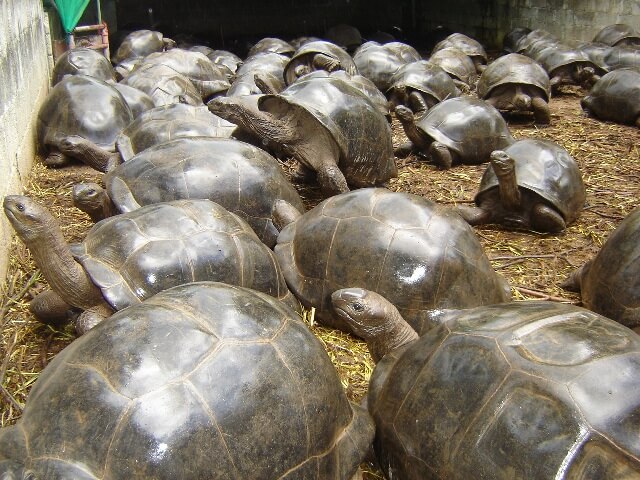
We have been selling Aldabras breed in our farm in the Seychelles for over 20 years. We offer Aldabras that have been breed on our US Florida farm and our Seychelles farm. Tortoises breed on our Seychelles farm may be pre-ordered as we receive multiple shipments a year. Due to their limited quantity, pre-ordering your "Special Order Aldabra" tortoise before it arrives is the best way to ensure that you receive one in that shipment.
Videos
Descriptions
We have been selling Aldabras breed in our farm in the Seychelles for over 20 years. We offer Aldabras that have been breed on our US Florida farm and our Seychelles farm. Tortoises breed on our Seychelles farm may be pre-ordered as we receive multiple shipments a year. Due to their limited quantity, pre-ordering your "Special Order Aldabra" tortoise before it arrives is the best way to ensure that you receive one in that shipment.
History about the Aldabras or Seychelles Tortoises Some Aldabras or Seychelles Tortoises were probably introduced to Mauritius by sailors in the 17th century. The islands of Mauritius, Rodrigues and Reunion, also had their own endemic species of giant tortoises, (genus Cylindraspis). These existed in huge numbers on all the islands, but were driven to extinction in the 18th century by European sailors in search of fresh meat and oil. Rodrigues alone had over 200.000 giant tortoises wiped out in less than one hundred years, and Aldabras were probably imported as food to Mauritius after the decline of the endemic tortoises. The decline of the Aldabra tortoise was signaled by Charles Darwin, in his famous letter to the Governor of Mauritius and Seychelles, dated April 1874. Darwin’s letter added to the growing concern in the colony about the decline of Aldabra tortoises and helped push the authorities to protect them in Aldabra. At that time the Seychelles was administered from Mauritius and was part of the same colony. There were plans to develop Aldabra for coconut production and exploit the island’s limited resources; this would probably have led to their extinction. More recently, there were also plans by the UK government to turn the Atoll into a military airbase in the 1970s, but after a protest by biologist the plan was dropped and Diego Garcia was used instead Since the time of Darwin’s letter, many Aldabra tortoises have been brought to Mauritius. A large number were introduced to Flat Island off the north coast of Mauritius and were thriving there by 1910. However the last one there was removed in1943. They have since been bred to varying degrees of success in Mauritius, being kept at the Botanical gardens; President’s residence and on a few Sugar Estates. It was not until the late 80s that a large scale breeding program was initiated by La Vanille Crocodile Park Charles Darwin wrote his letter (co-signed by other important biologists of that time) because he had already see what had happened to the Aldabra’s cousins the Galapagos tortoises in the Pacific, and what had also happened to there less well known relatives in the Mascarene Islands, and the Seychelles. Darwin and the others suggested to the Governor of Mauritius, who’s mandate also covered the Seychelles Islands, that some Giant Tortoises be taken from Aldabra Atoll to Mauritius so there would be a secure population should the native population go extinct on Aldabra, the last surviving outpost of these tortoises. Luckily Aldabra was not on the main sailing trade routes, and combined with the hostile terrain this allowed the species to survive. The Aldabras sent to Mauritius and placed in the Botanical Gardens thrived and produced many offspring over the years, from which our herd originated from.
Breeding Program
Before you think of buying an Aldabra tortoise, you should be aware that they can grow to a very large size and weigh up to 400kilos, (900lbs) they are also very long lived animals, passing 100 year life span if properly looked after. And can eat a great amount of food.
If you do not have the time and space to house a very large tortoise perhaps they are not the pet for you. Please research Aldabra tortoises before purchasing one, there are several good book available on the captive keeping of Aldabras and plenty of information on the Internet. Or contact other Aldabra keepers before you decide.
If you do decide you do want to keep an Aldabra, you will find them a rewarding pet, they can become very personable and soon come to recognise their keepers. They are very hardy animals; they do best in large outdoor enclosures with access to direct sunshine for at least a part of the year. In temperate climates they will need to keep inside in a heated barn or greenhouse during the cold winter months, but may be let out on sunny days when temperatures are over15ºc.(59ºf) Ideal climates include anywhere in the tropics, southern states oft he USA, tropical and southern Africa, Asia, Australia, and South America. They are also very sociable animals and do better if kept in groups.


